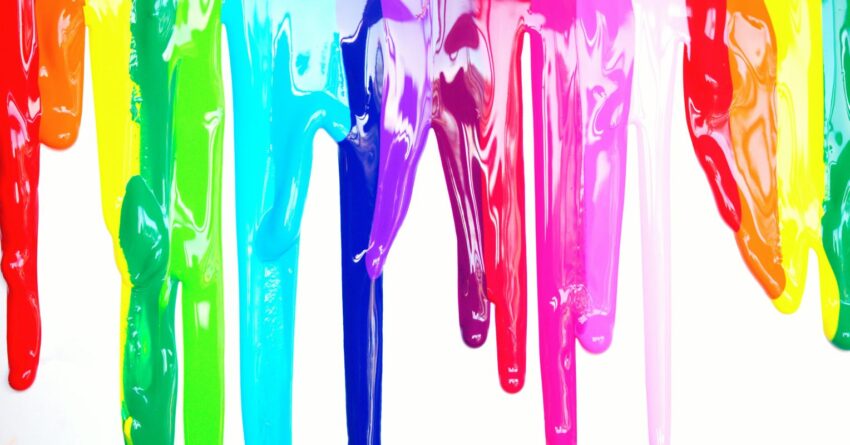It’s an exercise I do with clients and myself: I grab paints, reflect on what I’m feeling, and put a big color paint dot for each emotion. Worry? That’s purple. Sad? Okay, blue. Maybe I’m going to make my anger orange today, or traditional red. Then comes the fun part: The paper tilts and the paint runs. All those emotions get mixed. This is anxiety.
In some ways, emotions are like paints. We have six primary emotions: sadness, happiness, surprise, fear, anger and disgust. And when we mix these we create secondary emotions. For example, happiness and surprise create excitement. There are no good or bad emotions; they are natural responses to life.
But what happens when we call them “bad”? We push them away and they murk together into this indiscernible muck. And then that muck turns into something harder to define. Over time, it can eat at you. And our first impulse to deal with that is to try to push it away too, right? But that doesn’t work for long.
At some point, we have to stop hiding our eyes and begin separating the mists. It might hurt a little, but it allows healing. We experience life in all its darkness and brightness. That is a good thing.
Watching the paint drip can be cathartic. It can also give rise to new insights. What particular emotions created this storm?
This isn’t always easy. Sometimes emotional suppression runs deep.
Trauma can incite us to suppress emotions. A recent study found that individuals living with active PTSD symptoms often suppressed even positive emotions (Kiefer et al., 2014). At times, this can feel like a survival strategy. It might feel like what’s necessary to keep going. Yet it comes with a cost.
Sometimes we’ve held emotions back for so long that we lose track. Those emotions don’t go away.
In Acceptance and Commitment Therapy, there is a metaphor of a beach ball: Like a beach ball, the harder we push emotions away the more strongly those same emotions tend to rise to the surface (Stoddard and Affari, 2014). Research has shown that emotional suppression is linked to a variety of negative outcomes including earlier mortality (Tsai and Lu, 2018) and risk of cardiovascular disease (Cundiff et al., 2019).
The truth is, no emotions are “bad.” Some can be unpleasant or give us urges that would go against our values. Yet, at the end of the day, we choose what to do.
When we cast away what we feel, we might lose track not only of the emotion but also of what preceded the emotion. We block ourselves from processing.
We live in a culture in which emotions are often viewed as something to be controlled. It’s true that regulating our actions on emotional urges can mean the difference at times between doing something that helps and doing something that hurts. Still, the current of those emotions needs to be felt. In Acceptance and Commitment Therapy, this is called “allowing”—just allowing the emotion to exist.
Through validation we show others that it’s okay to feel their emotions, too.
I once came to a friend expressing worry about something I knew that they had also been through. She didn’t give me advice or say, “It’s not so bad.” She let me know that it is okay to be afraid. That meant more to me at the time than any guidance could have.
Expression—giving the emotion space to rise and fall—can be a step to healing. Whether it’s pleasant or not.
If you are struggling with feeling your emotions, here are some places to start:
1. Practice Mindfulness. We often feel emotions in the present moment. You might take a few minutes to watch a squirrel or an extra moment to enjoy the feel of the sun. This is what you experiencing.
2. Permit Yourself to Create. As kids, we often find art to be fun and exciting. As adults, we are more apt to judge our art. Try an exercise of creating something just for the sake of creating.
3. Connect with Music. Music is a beautiful means of emotional expression. Even listening to music without words, we can often feel an underlying gusto.
4. Therapy. If you find yourself habitually pushing away, consider meeting with a therapist. A therapist can provide you with a brave space where you can face your emotions or uncover what is keeping you from feeling.
To find a therapist, visit the Psychology Today Therapy Directory.
